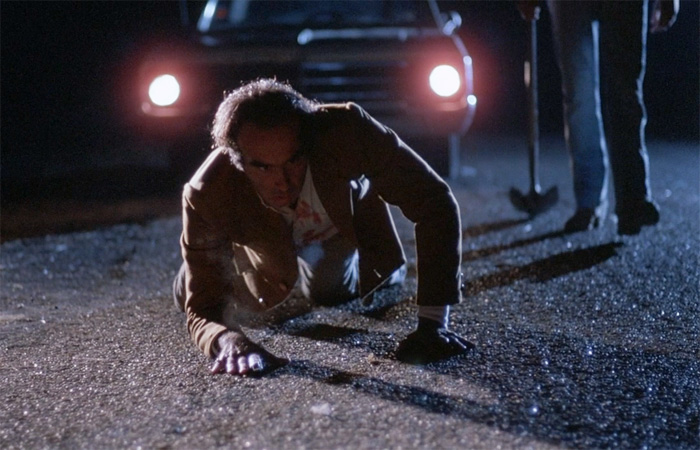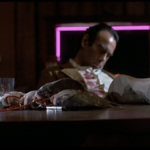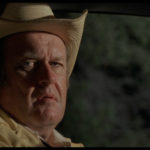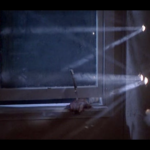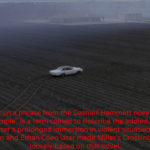The film’s title derives from the Dashiell Hammett novel Red Harvest (1929), in which the term “blood simple” describes the addled, fearful mindset of people after a prolonged immersion in violent situations – Wikipedia
How wonderful to see the Coen Brothers‘ debut movie Blood Simple once again. At its launch in 1984 I saw the film at the cinema and marvelled at its darkly humorous, taut, spare, slow burn neo-noir elegance. I liked it then and to this day think it is the best work in their considerable collective oeuvre and admirable demonstration of the virtues of simplicity – yet, like many things in life, to appear simple requires incredible attention to detail and immense skill.
Also, it sets off a recurrent theme in the Coens’ work, namely the terroir. The mise-en-scène is very specific to its location in the depths of rural Texas, just as they later used snow-bound Minnesota and North Dakota to great effect in both guises of Fargo, Arizona in Raising Arizona, Mississippi in O Brother, Where Art Thou, and many more. The landscape, the music and the accents are very particular to the yarns told, and would be very different if placed anywhere else.
Like Chaucer‘s Pardoner’s Tale Blood Simple is a story about how the very human traits of greed and envy can result in murderous intent, though in this case with entirely unforeseen consequences thanks to the individual hidden motivations, deceits and conceits of the characters involved bouncing off another like billiard balls, a theme explored in later works such as Fargo (and the TV series.)
In this case, the main protagonists are jealous club owner Julian Marty (Dan Hedaya), his unfaithful wife Abby (Ethan’s real life wife and future Oscar winner for Fargo Frances McDormand), her lover and his employee Ray (John Getz), and private eye Loren Visser (M Emmet Walsh.) The interaction between these four creates the dynamic, but what makes the movie is their slow-paced thought processes they go through to rationalise their predicament at each stage.
They each have distinct characteristics and behaviours that the brothers Coen allow to flourish by giving each actor time and space to develop. Whether Visser’s silly high-pitched giggle was part of the script I doubt, but Walsh succeeds in using it to lighten the tension and yet imbue the scene with sinister intent: it is a punctuation in his thought process, allowing the character to plot his next move.
The minute attention to detail allows every object in shot to play its part and become relevant to the process, such as Visser’s cigarette lighter and the Hawaiian dancer motif in his car that irritates the quiet but volatile Marty to distraction. With few words, Marty demonstrates his frustration and piles up the layers of conflict higher still.
The plot really is simple and involves a good deal of blood, such that the title deliberately works at two levels: having screwed up attempts to intimidate Ray and Abby, Marty wants Visser to kill his wife and her lover; Visser fakes proof of their death but shoots Marty and leaves him to die. Ray discovers the body and wrongly assumes Abby has shot him, so takes steps to bury the body, only for Marty to regain consciousness and attempt an escape – by which time you the viewer are totally hooked and can’t look away.
I could go on, but would not wish to spoil your viewing pleasure. You get the picture – there is a degree of ambiguity and comic misapprehension to every action, yet it is all part of the tragic inevitability in this dance of death.
Suffice it to say that the dark humour and irony work like a seam right through to the final shot. Blood Simple is a joy to behold, and most definitely a film for every serious film buff to watch at least once in a lifetime.

